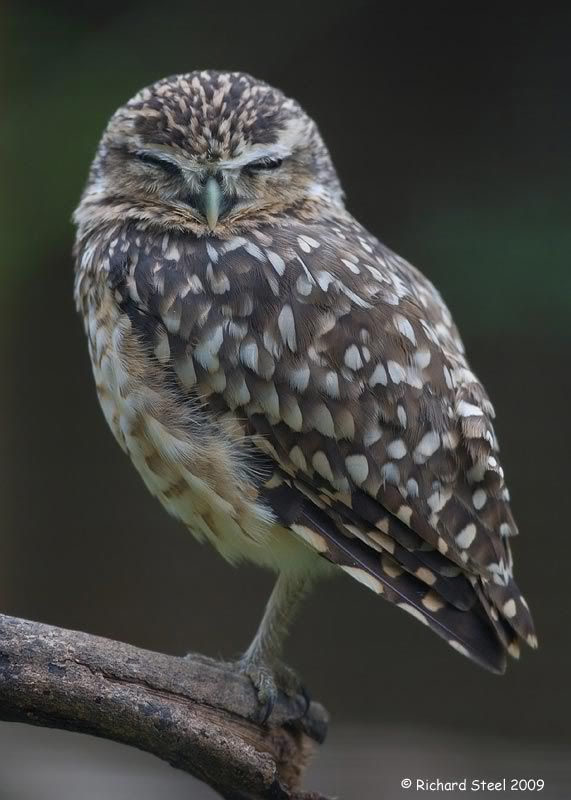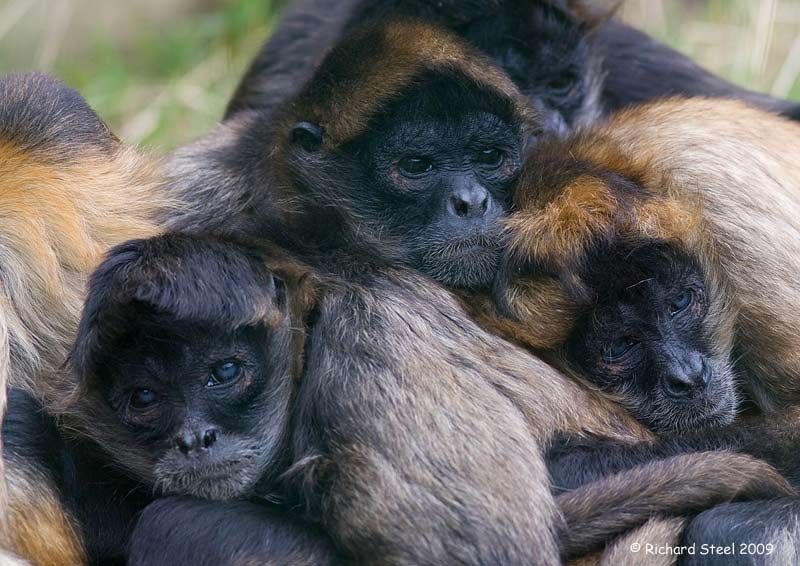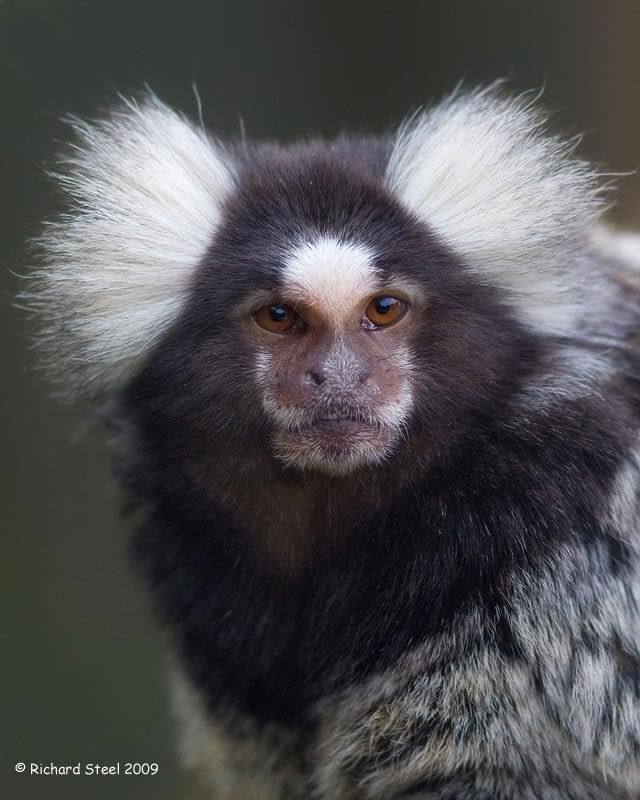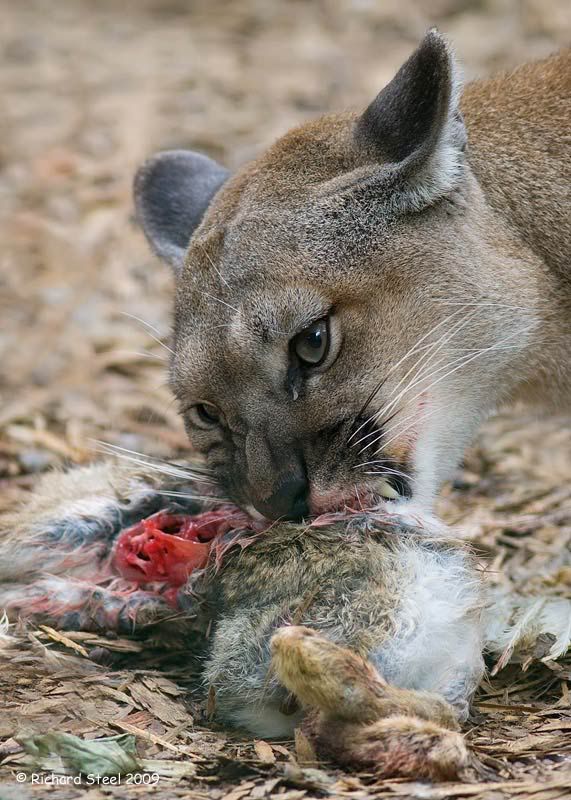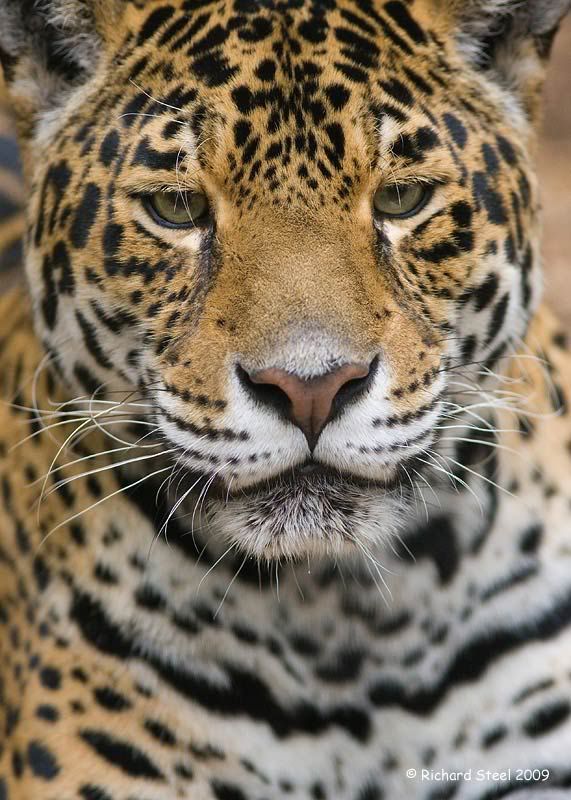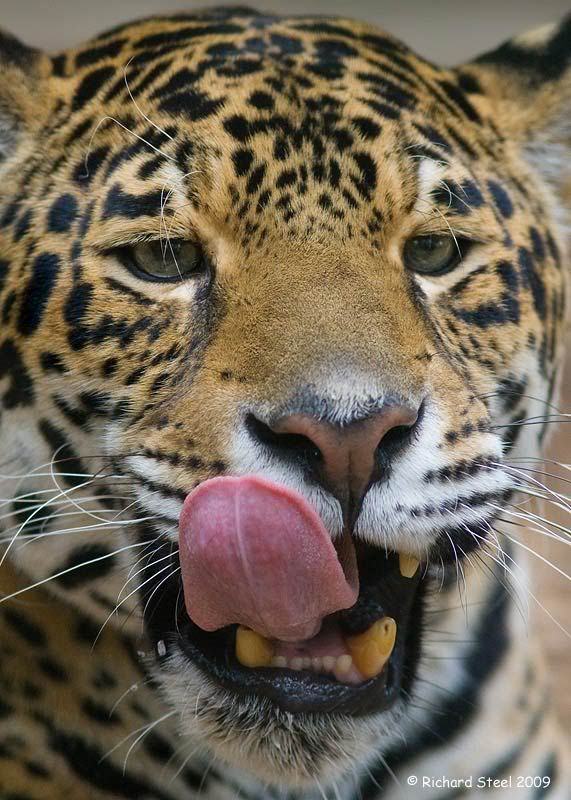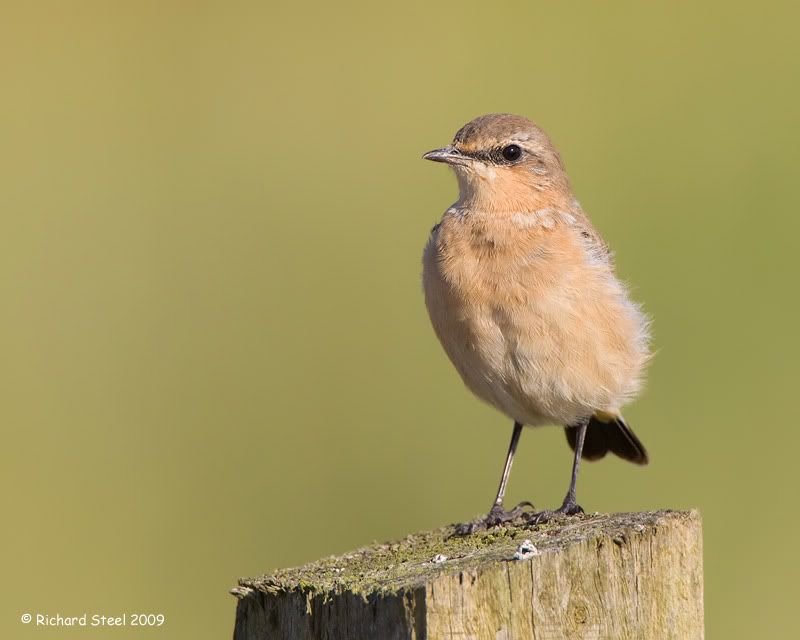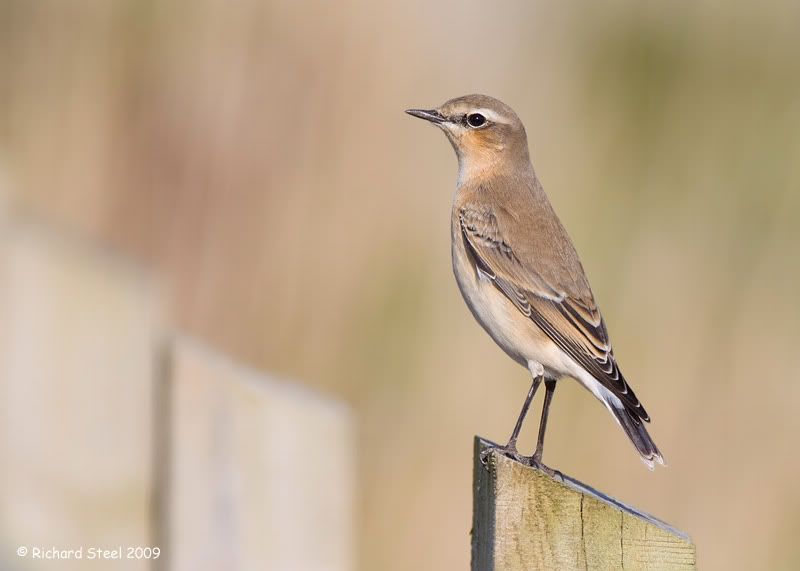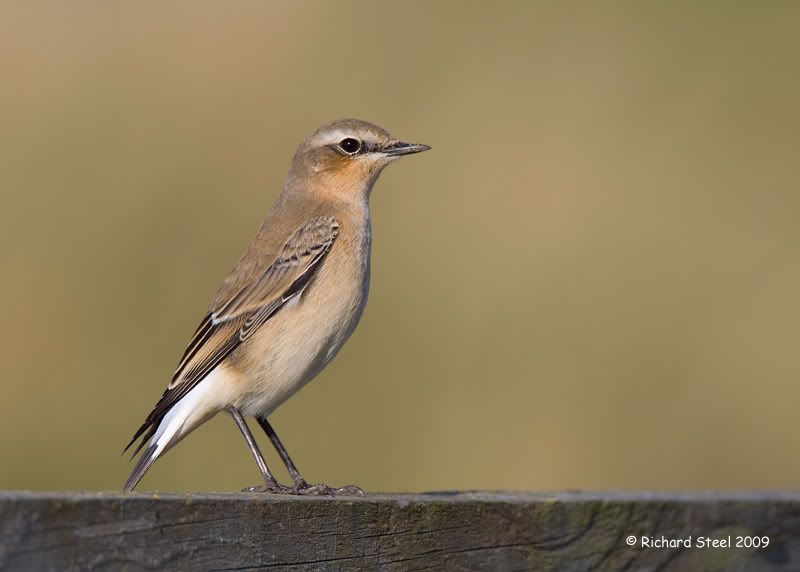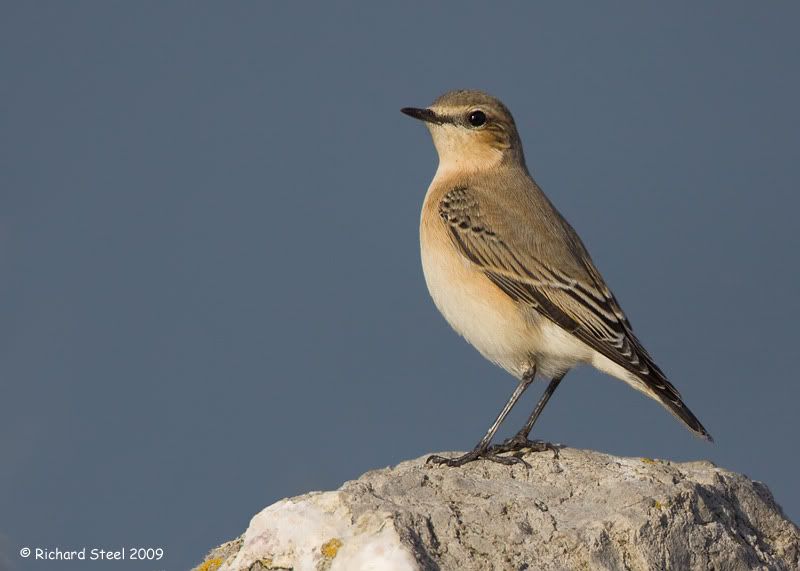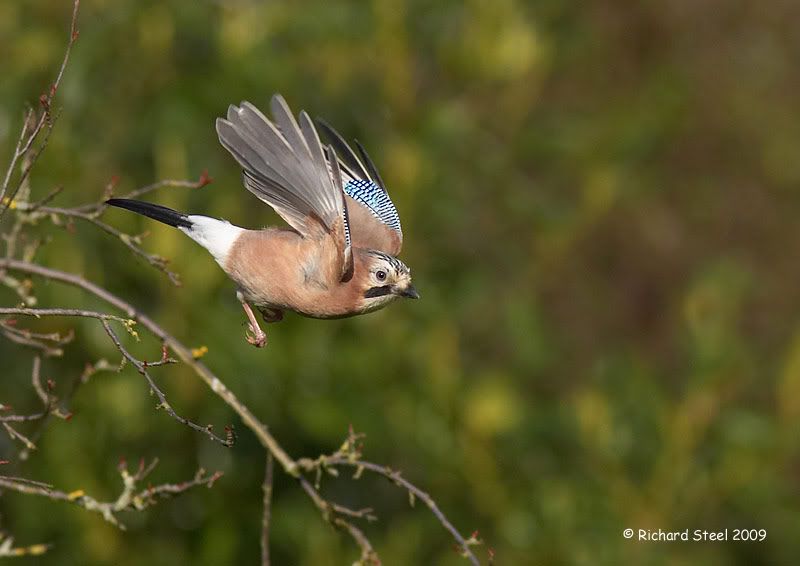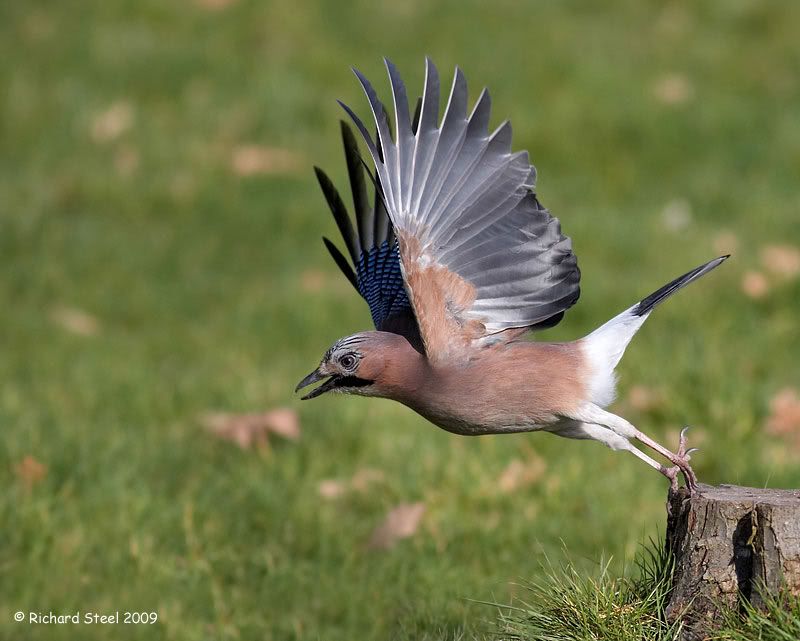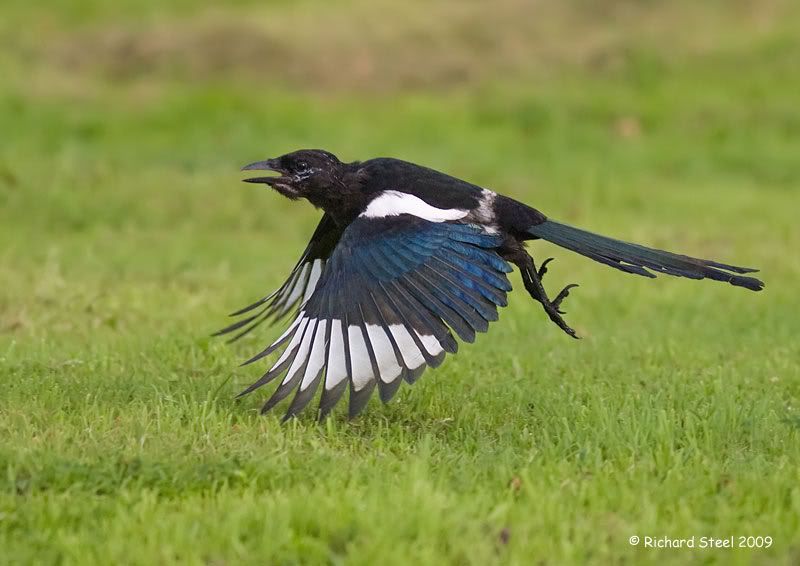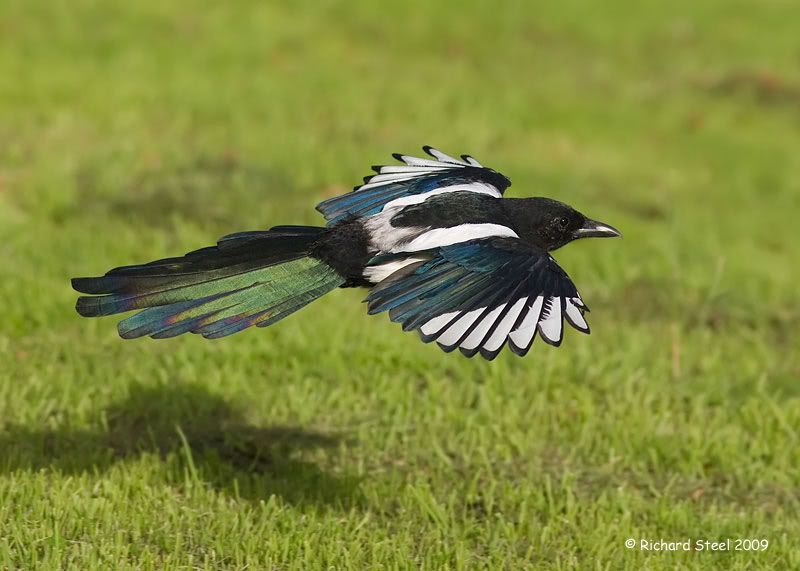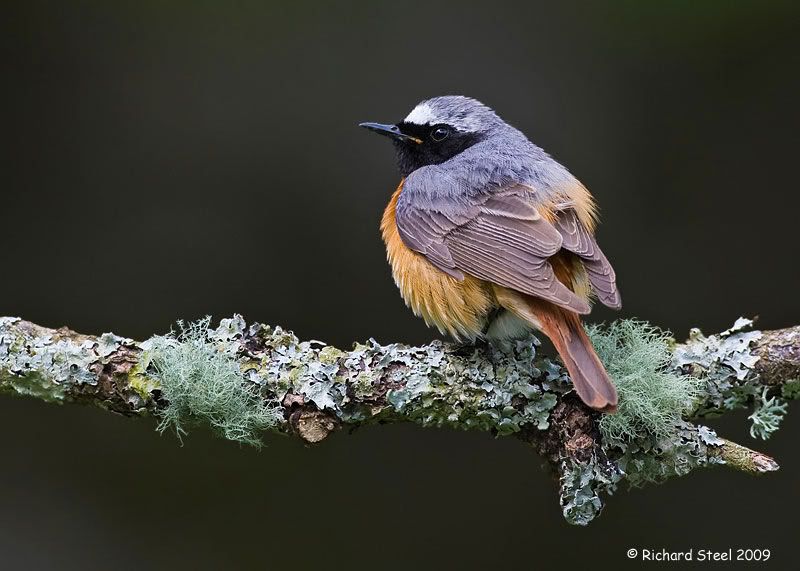Cromer Zoo
My holiday last week in Norfolk is now a dim and distant memory having returned to heavy workload in the office. While away we visited the new small zoo at Cromer which was quite interesting as it held a number of animals that I have seen before. The light was not great but some of the enclosures were reasonable for getting some photographs after a bit of careful positioning.
Zoos generate a lot of mixed feelings and of course everyone would ideally like to see animals running, flying or swimming free and wild. My view is that not only do they undertake very important conservation work and are making great steps for improving the enclosures for the animals but also they offer the chance for the public to get a glimpse of the wonderful diversity of this planet which they would not normally get to see. As a bonus they also provide a good practice ground for the photographer.
The zoo at Cromer is known as the 'Amazona Zoo' so it seems appropriate to start this post with an Amazon Parrot
The zoo held a couple of owls. The problem will photographing owls in zoos is that the visit in the daytime coincides with when they want to sleep, like this burrowing owl, and so they don't tend to make great subjects for the camera.
There was a small tropical house which held some caimen but the light in there was even worse than it was outside.
I then turned my attention to some mammals. There was a heap of slightly dejected looking spider monkeys.
The perennial zoo favourite in the shape of Geoffrey's Marmoset
There were some interesting cats that you do not often see in the zoo including puma and ocelot and which I have not put in front of the camera lens before, although unfortunately the enclosure of the latter was just not suitable for getting any photographs, particularly when combined with the low light levels and very active cats. The big cats all looked to be in real great condition.
Just a small warning before the next photograph as it shows graphic content of a puma feeding on a rabbit. Nature is not always attractive when predator is consuming prey but I think you will agree the puma is a wonderful looking animal.
I occasionally receive emails asking how I manage to get photographs in zoo where there is no mesh showing and it looks like you are inside the enclosure. This is achieved by a combination of three factors. Firstly careful positioning as you ideally want to get the camera as close to the mesh as possible and the animal at some distance away in the enclosure. Incidental the smaller the mesh size the more difficult it is to overcome. Secondly you need a lens of reasonable focal length as this creates a shallower depth of field (these shots were taken with a 300mm lens which is probably the minimum you can get away with). Thirdly you need to open the lens aperture right up (F4 in the case of my 300mm). The result of all this is that it puts the mesh so far out of focus that it effectively disappears as can be seen in the jaguar photograph.
To finish off I have noticed on my recent zoo trips that big cats start licking their lips when they see me which is a bit concerning!
Saturday, September 26, 2009
Monday, September 21, 2009
From North to South
The Northern Wheatear are currently making their long journey back southward towards Africa for the winter. Small groups of birds can be found temporarily pausing along the scrub and pasture areas behind the local coast, although finding them is more a question of luck in being there at the right time as some are passing through. I was fortunate to recently locate a group of 8 birds.
The autumn passage birds have a 'softer' look about them as the males have lost their bold markings of the spring and all the take on an appealing warm apricot colour. These returning wheatear also seem much more approachable than those found in the spring and were typically perching along the fence line of a paddock.
A few were also present on the large boulders of the local sea defences which is the closest similar habitat they will find around here to their rocky upland breeding grounds.
The birds were busy hopping down from the fence posts on the a gravel path to feed on insects to fuel their long journey.
However, the heat haze coming off the path on the warm early autumn day was playing havoc with focusing as usual. This bird was having a battle trying to subdue a large beetle in had found.
Wishing them all a safe onward journey and I look foward to their return with their spring colours in the middle of March.
The Northern Wheatear are currently making their long journey back southward towards Africa for the winter. Small groups of birds can be found temporarily pausing along the scrub and pasture areas behind the local coast, although finding them is more a question of luck in being there at the right time as some are passing through. I was fortunate to recently locate a group of 8 birds.
The autumn passage birds have a 'softer' look about them as the males have lost their bold markings of the spring and all the take on an appealing warm apricot colour. These returning wheatear also seem much more approachable than those found in the spring and were typically perching along the fence line of a paddock.
A few were also present on the large boulders of the local sea defences which is the closest similar habitat they will find around here to their rocky upland breeding grounds.
The birds were busy hopping down from the fence posts on the a gravel path to feed on insects to fuel their long journey.
However, the heat haze coming off the path on the warm early autumn day was playing havoc with focusing as usual. This bird was having a battle trying to subdue a large beetle in had found.
Wishing them all a safe onward journey and I look foward to their return with their spring colours in the middle of March.
Saturday, September 19, 2009
On TV Again....
Sorry about the lack of updates but I have been away on holiday in Norfolk during this last week. I managed a few photos whilst there despite very limited camera time which should appear on here once I get round to processing them.
Just a quick note to let you know that I should be appearing on BBC Countryfile tomorrow, Sunday 20th September on BBC 1 at 7pm. Thats assuming I didn't end up on the 'cutting room' floor!
Update.... here is a link to the show which will be available on BBC iplayer for the next 7 days
http://www.bbc.co.uk/iplayer/episode/b00mwtvz/Countryfile_20_09_2009/
Sorry about the lack of updates but I have been away on holiday in Norfolk during this last week. I managed a few photos whilst there despite very limited camera time which should appear on here once I get round to processing them.
Just a quick note to let you know that I should be appearing on BBC Countryfile tomorrow, Sunday 20th September on BBC 1 at 7pm. Thats assuming I didn't end up on the 'cutting room' floor!
Update.... here is a link to the show which will be available on BBC iplayer for the next 7 days
http://www.bbc.co.uk/iplayer/episode/b00mwtvz/Countryfile_20_09_2009/
Thursday, September 10, 2009
Project J Update
Almost a flight photo
Not being the type of person that gives up easily I decided to resurrect the project. However, I have already decided that I have probably started too soon as there is still a good supply of natural food around to tempt the jays away from where I want them. So the project will probably be paused briefly until the late autumn now. Of course some magpies put in appearance and so I decided to use them for practice to refine the camera technique for the jays ahead, hopefully!
Some of the magpies are still not looking at their best as they are in moult. AS you can see this one is a slightly lacking the full compliment of feathers around the head.
This bird has completed its moult and if you can get them at the right angle to the light then the blue, greens and purples really start to shine.
A further update of Project J will appear in the future and hopefully with some photos to show for my efforts.
Sunday, September 06, 2009
Competition Win
I recently entered a photography competition run by the North Wales Daily Post in conjunction with Airbus. The theme of the competition was to submit a photo that represented the biodiversity of North Wales. As I have spent quite a bit of time in North Wales photographing the woodland summer migrants that are typical of the sessile oakwoods of the area, I thought it worth entering. The choice of which photograph to enter was quite difficult and fell between pied flycatcher, wood warbler and common redstart. I settled on a Common Redstart on a lichen covered branch which is typical of these oakwoods. The photograph won the competition and part of the prize is that the image appears within the exhibition of Joel Sartore, a National Geographic Photographer, that has just opened in Llanberis. It makes all those hours of quiet waiting even more worthwhile.
Here is the winning photo.
I recently entered a photography competition run by the North Wales Daily Post in conjunction with Airbus. The theme of the competition was to submit a photo that represented the biodiversity of North Wales. As I have spent quite a bit of time in North Wales photographing the woodland summer migrants that are typical of the sessile oakwoods of the area, I thought it worth entering. The choice of which photograph to enter was quite difficult and fell between pied flycatcher, wood warbler and common redstart. I settled on a Common Redstart on a lichen covered branch which is typical of these oakwoods. The photograph won the competition and part of the prize is that the image appears within the exhibition of Joel Sartore, a National Geographic Photographer, that has just opened in Llanberis. It makes all those hours of quiet waiting even more worthwhile.
Here is the winning photo.
Tuesday, September 01, 2009
Hare Tonic
During August as the bird photography can be a little on the quiet side I thought it time have a break from the birds and to catch up with the hares again. They provide a great diversion and refreshing tonic from the bird photography and always entertaining and fun to photograph. I am occasionally sent emails asking how to go about photographing these enigmatic animals and my first bit of advice is to get a good alarm clock as an early start will provide the best chance of finding them.
Back-lit against the rising sun
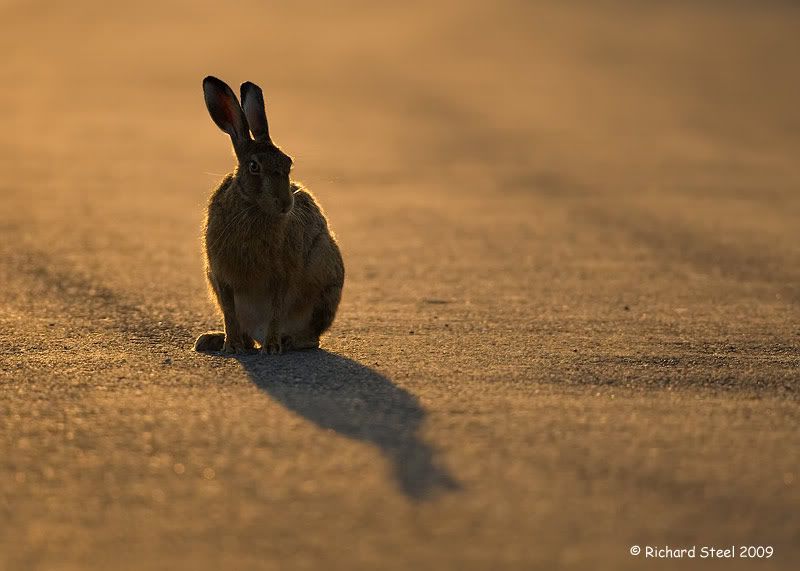
They can often be quiet in the early part of the day and may be found just standing around, sometimes warming themselves in the sun and at other times grooming themselves or just quietly feeding.
I thought I was suffering from early morning blurry double vision when I first spotted these two.
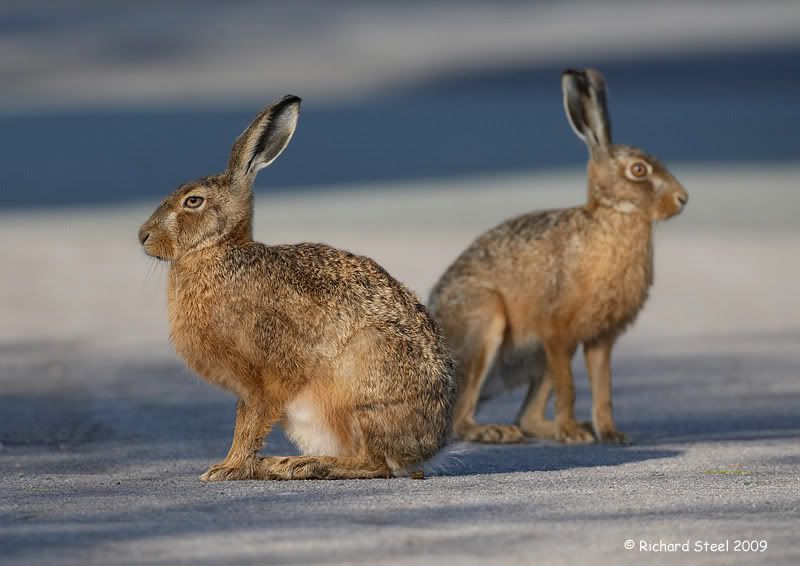
It often does not take them long to start getting up to some of their usual 'mad' hare antics. This can be just having a personal odd moment ...
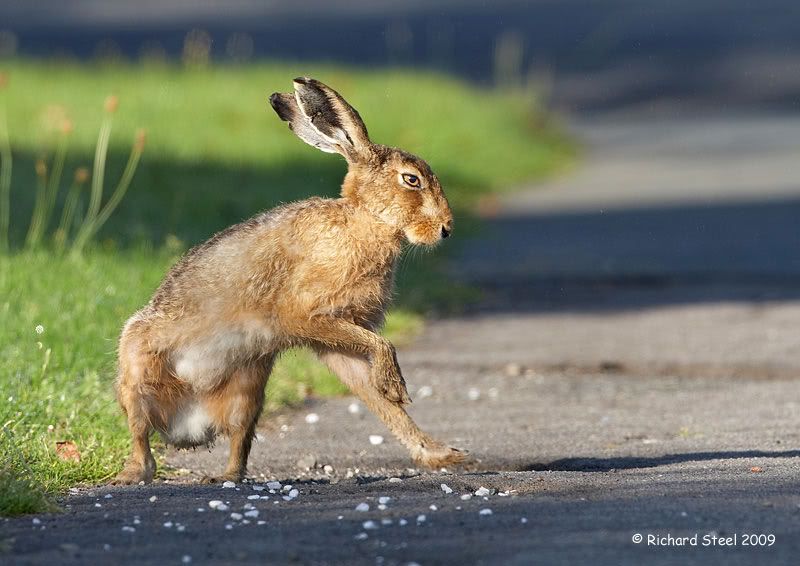
.....to the typical chasing round of the females by the males.
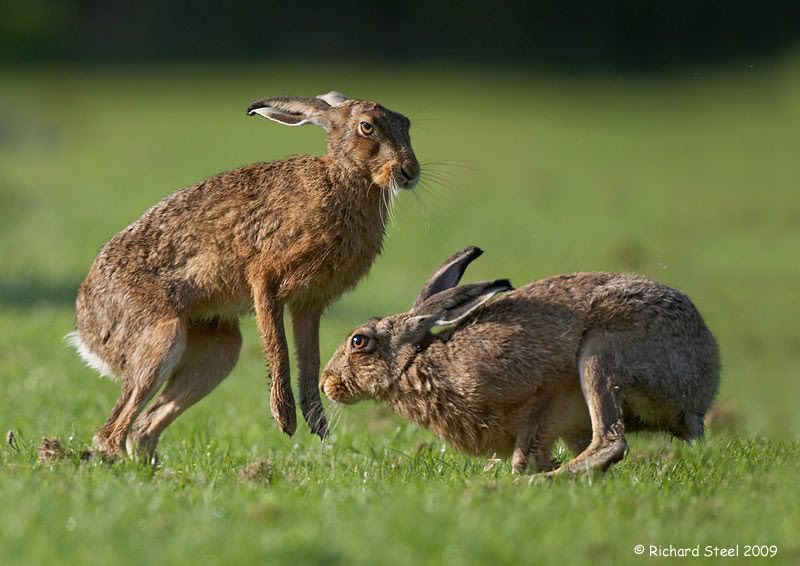
To finish the post, the first leveret I have seen this year. Always good to see some of these new mini-hares which hopefully will provide many more photos in the years to come.
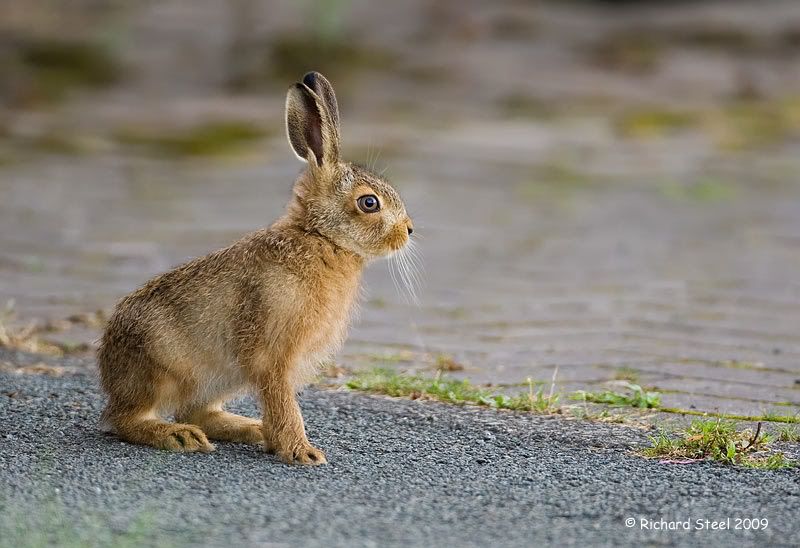
During August as the bird photography can be a little on the quiet side I thought it time have a break from the birds and to catch up with the hares again. They provide a great diversion and refreshing tonic from the bird photography and always entertaining and fun to photograph. I am occasionally sent emails asking how to go about photographing these enigmatic animals and my first bit of advice is to get a good alarm clock as an early start will provide the best chance of finding them.
Back-lit against the rising sun

They can often be quiet in the early part of the day and may be found just standing around, sometimes warming themselves in the sun and at other times grooming themselves or just quietly feeding.
I thought I was suffering from early morning blurry double vision when I first spotted these two.

It often does not take them long to start getting up to some of their usual 'mad' hare antics. This can be just having a personal odd moment ...

.....to the typical chasing round of the females by the males.

To finish the post, the first leveret I have seen this year. Always good to see some of these new mini-hares which hopefully will provide many more photos in the years to come.

Subscribe to:
Posts (Atom)


